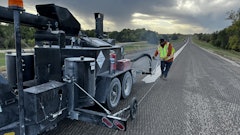“The weight of evidence is not sufficient to conclude that refined coal tar sealants [RTS] are causing adverse effects to aquatic organisms in the environment.” That was the conclusion reached by Dr. Susan Kane Driscoll, a well-known aquatic toxicologist who has reviewed the published science. Dr. Kane Driscoll is a specialist in the bioavailability and toxicity of contaminants sediments to aquatic organisms, with a focus on polycyclic aromatic hydrocarbons (PAHs). She has co-authored scientific articles with US Environmental Protection Agency (EPA) scientists about the equilibrium partitioning method, and has been a technical reviewer of multiple EPA guidance documents related to determining the toxicity of PAH mixtures in the aquatic environment.
In her evaluation, Dr. Kane Driscoll emphasized the importance of distinguishing between adverse effects observed in laboratory tests and those observed in the real world environment. The concern with relying solely on laboratory data is that the complexity of the real world is difficult to reproduce in laboratory observations. In the case of the science of RTS, examples of the limitations of laboratory studies include weak associations between observed effects and PAH concentrations, use of solvent extracts of sealants rather than processes present in the real environment, and the small reported size of potentially reversible effects.
Dr. Driscoll also observed that both PCTC-funded evaluations and government-funded studies have found that RTS is not a significant source of PAHs in sediments in the US.
There is a large body of evidence which demonstrates that the toxicity of PAHs in the aquatic environment varies greatly depending on the type of PAH-containing material involved. This variability in toxicity is related to differences in bioavailability. Bioavailability is a measure of how much of the substance being tested actually reaches the body’s circulation systems such as the blood stream rather than being filtered by the body’s natural protection mechanisms. For example, inhaling sawdust particles through the nose will not mean that the substances in the sawdust actually reach the bloodstream and have a potential toxic effect. Bioavailability of PAHs that come from combustion-related particles (for example, coal tar, coke, soot) is generally lower than for other sources of PAHs (for example, oil, gasoline). Bioavailability of PAHs in coal tar pitch particles in sediments has been shown to be among the lowest measured, and considerably lower than for other sources. And since the concern is with the potential toxic effects of PAHs, the PAHs must be bioavailable to have any measurable toxic effect.
In other words, the difficulty PCTC has experienced finding any examples of aquatic toxicity associated with RTS in the real environment should not be a surprise because of the low bioavailability of PAHs in the refined tar base used to manufacture RTS.










![Lee Boy Facility 2025 17 Use[16]](https://img.forconstructionpros.com/mindful/acbm/workspaces/default/uploads/2025/09/leeboy-facility-2025-17-use16.AbONDzEzbV.jpg?ar=16%3A9&auto=format%2Ccompress&fit=crop&h=135&q=70&w=240)








